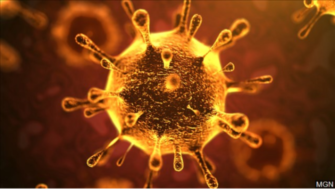
First there was the SARS virus in 2003.
The source of the SARS coronavirus has not yet been conclusively identified
Pathogen of SARS
The causative agent of SARS is the human coronavirus (SARS-CoV), which belongs to the group 2b coronaviruses, which also includes MERS-CoV. The SARS coronavirus is an RNA virus. Four other human coronaviruses have been known for a long time: 229E, OC43, NL63 and HKUI1. These viruses cause the common cold just like rhinoviruses. The SARS-CoV differs from these coronaviruses because it can cause a lower respiratory tract infection in humans. A possible role for other pathogens has not yet been determined. Strikingly often, there is a co-infection with metapneumovirus, but the meaning of this is unknown.
- Pathogen: human coronavirus (SARS-CoV)
- Contamination route: human to human through drops (during talking, coughing, sneezing) or through direct contact with body fluids. Air exchange systems. Faeces aerosols
- Incubation time: 2-10 days (usually 5)
- Infectious period: during the presence of symptoms, respiratory infectivity lasts up to 10 days after the disappearance of the fever, provided that respiratory symptoms have disappeared
- Measures: depending on the category. Source and contact research. Insulation and further measures on indication
- Symptoms: non-specific: fever (> 38 ° C), muscle pain, headache. After 2-7 days: dry cough, dyspnoea, sometimes diarrhea. Day 7-10 sometimes worsens disease.
Pathogen Coronavirus is similar to SARS
The new human coronavirus, severe acute respiratory syndrome coronavirus (SARS-CoV2), belongs to the species of Severe Acute Respiratory Syndrome related Coronavirus, genus beta-coronavirus, subgenus Sarbecoviruses, lineage B. (Zhou, 2019). Coronaviruses cause respiratory infections, sometimes with an enteral component, in humans and animals. This group also includes SARS-CoV, which caused outbreaks worldwide in 2003 in various regions.
Symptoms of the Coronavirus
- Varying, from mild non-specific respiratory complaints: nose colds; sore throat (14%); (dry) cough (68%); fatigue (38%); sputum production (33%); muscle and joint pains (15%); headache (14%) and increase, to more serious syndromes with fever (> 38 degrees Celsius, 88%); shortness of breath (19%) and pneumonia, up to acute respiratory stress syndrome and septic shock. Also reported (in a smaller proportion of patients): diarrhea (4%); nausea and vomiting (5%). About 80% of the reported cases have mild to moderate complaints, 13.8% had serious complaints and 6.1% had very serious complaints.
The patients with complications are divided into 'severe pneumonia' if they are in need of oxygen (about 65% of the cases), 'critical' if they need ventilation (about 20%), or 'fatal' (about 15% of the patients with pneumonia).
Questions:
- Why can the coronavirus survive on smooth surfaces for up to 3 days outside the body? Isn't this a natural virus?
- Why are there no known cases of animal contamination?
- How is it possible that tests were available immediately in large quantities the day after the infection was known?
- Why did the Chinese government not immediately respond with an official statement?
- Why were drastic measures taken immediately, such as building a hospital in 6 days, were people aware of the source and thus the consequences?
My conclusion:
There is a fishy smell to this...
Really still that fishy smell.....?
Answer: they want a big crash, more debts means more power to the central banks plus global reset of the financial system.
Everything u see is planned.
Downvoting a post can decrease pending rewards and make it less visible. Common reasons:
Submit